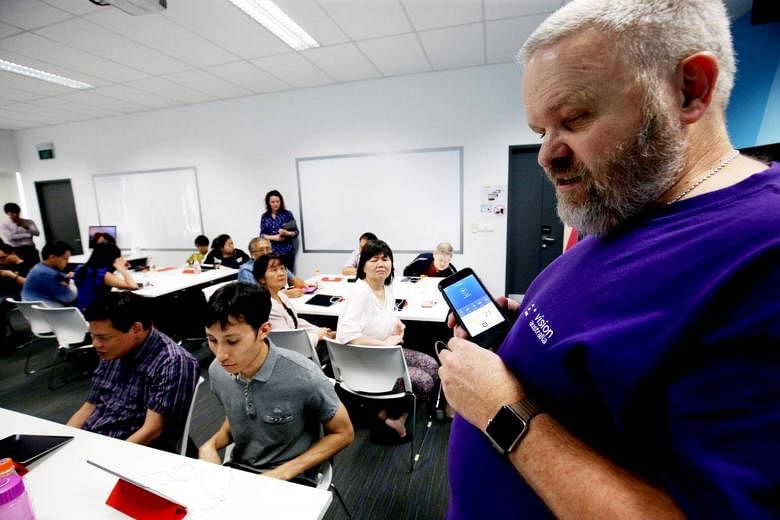SINGAPORE - People with disabilities will get more support to use assistive technology that helps them perform tasks independently.
Voluntary welfare organisations (VWOs) will have more grants to acquire assistive technology devices to help more of their beneficiaries. Efforts are also underway to raise awareness of built-in assistive technology features in popular devices such as the iPad tablet.
Minister for Communications and Information Yaacob Ibrahim announced these initiatives at his ministry's workplan seminar on Thursday (April 13). He said: "We need to expand our hearts and ensure that every Singaporean, especially the less privileged and people with disabilities, are part of our digital journey."
Under the Government's Enable IT Scheme, grants given to VWOs will be doubled to $100,000 per project, and this is expected to help another 3,000 beneficiaries over the next four years, up from 1,500 now.
The Infocomm Media Development Authority (IMDA) is also partnering tech companies to train a pool of people with disabilities to be "assistive technology ambassadors" who spread awareness of built-in accessibility features on the firms' devices and platforms. For a start, it plans to work with Apple and Microsoft to train about 160 people with disabilities this year.
IMDA and Apple rolled out their first assistive technology workshop for the visually-impaired last Thursday. It was conducted by Mr David Woodbridge, a blind senior adaptive technology consultant from Australia.
About a dozen visually-impaired people took part. They learnt, for instance, that with the VoiceOver screen reader enabled, if a blind user wants a blank screen while using the iPad - so people near him cannot see his iPad screen - this can be done by triple-tapping the screen with three fingers.
Participants said they found the workshop useful.
Waiter Zahier Samad, 30, had known about the screen reader features but was glad to learn of other mobile apps that are useful for the visually-impaired.
For instance, the Ring Video Doorbell app shows a video - which can be shared with sighted people - of the person at the door when a linked device detects movement nearby or when the person rings the doorbell.
He said it was also important to have built-in assistive technology features in mainstream devices. "This helps us in inclusion. I don't need to use a different device, so I don't feel so different from everyone else."





